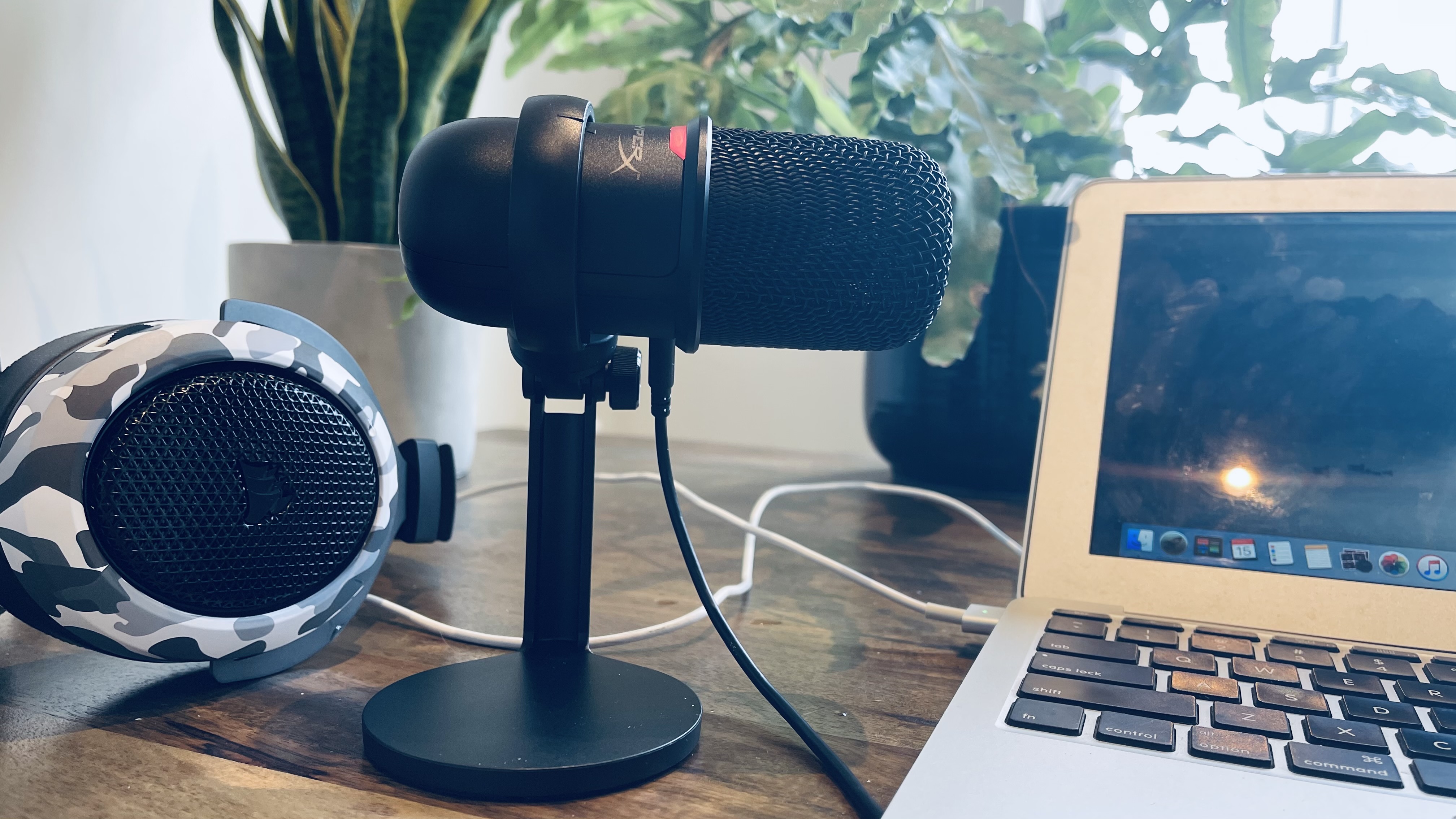Tom's Hardware Verdict
A low-cost entry point for streamers with tight budget and space constraints, the HyperX SoloCast is sound-rich and feature-light -- an ideal tradeoff for beginners.
Pros
- +
Can’t argue with that price
- +
Stress-free setup
- +
Clear, rich tone
Cons
- -
You’ll need a boom arm
- -
Cardioid only
- -
Not much of a looker
Why you can trust Tom's Hardware
Things are getting ultra-competitive at the budget end of the streamer mic market. Blue, Razer and HyperX all have some chips on the table here with small capsule, feature-light, low-cost spins on their higher-spec models, and all of them sound closer than you’d expect to the pricier version.
And if we’re playing our cards too, the differences between each manufacturer’s offerings are subtle. This isn’t 2012, and you won’t find noisy, scratchy devices that leave your Discord buddies wondering why you’re talking to them from inside a jet engine, not from any of the big players at least.
Instead, picking out a mic from the budget market is about your own specific setup scenario. The inexpensive and stylish Razer Seiren Mini, for example, sounds great but doesn’t feature a single knob or dial, leaving you handling levels and muting at the software level. Blue’s Snowball iCE has a choice of polar patterns, but is that what you really need?
If the HyperX SoloCast ($60 as of writing) has a unique selling proposition in the realm of such subtlety and specific catering for needs, it’s that it offers a relative sweet spot in compromise between sound, on-mic features and price. In other words: it’s tiny and sounds sweet as a nut, but it also has a mute button.
If we want to determine whether that’s enough to proclaim it the best gaming microphone in the budget category though, we’re going to have to delve a little deeper.
HyperX SoloCast Specs
| Frequency Response Range | 20 Hz - 20 KHz |
| Sample / Bitrate | 48 kHz / 16-bit |
| Polar Patterns | Cardioid |
| Headphone Amplifier Impedance | N/A |
| Cable Length | 6.6 feet (2m) |
| Dimensions (LxWxH in stand) | 3.1 x 3.1 x 7.1 inches (80 x 80 x 180mm) |
| Weight (microphone only) | 0.6 pounds (261g) |
| Extra | Removable stand |
Design
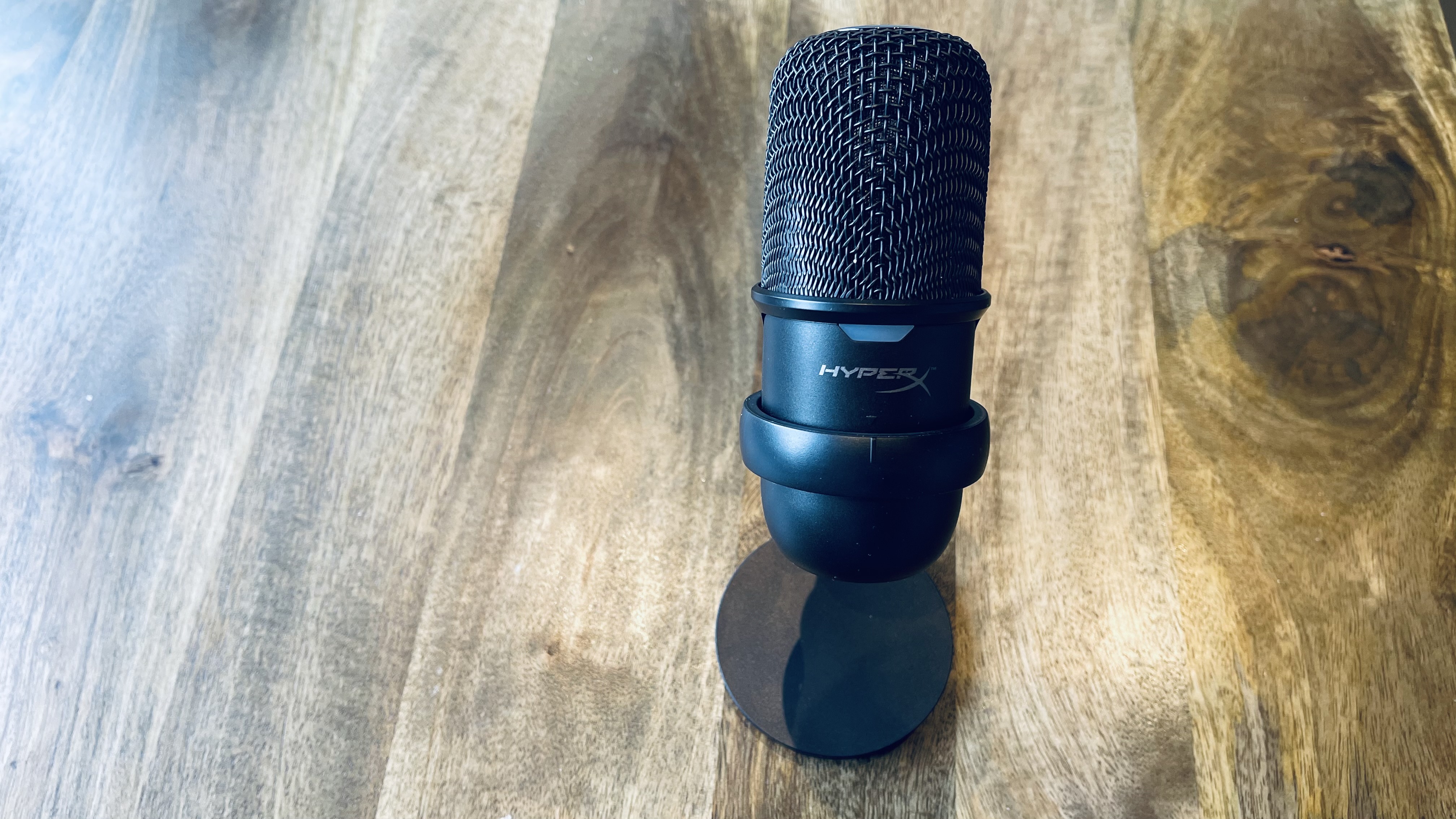
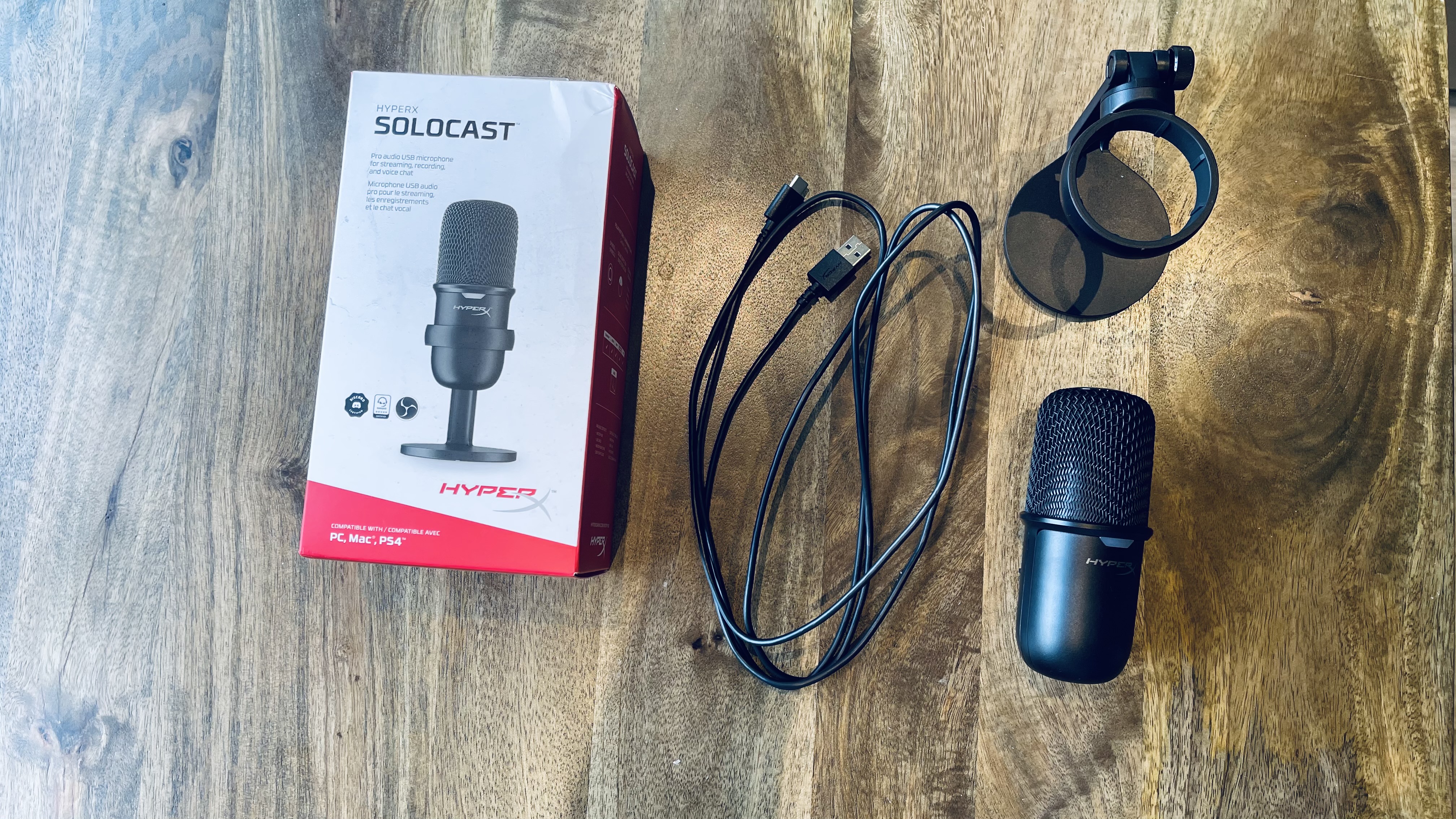
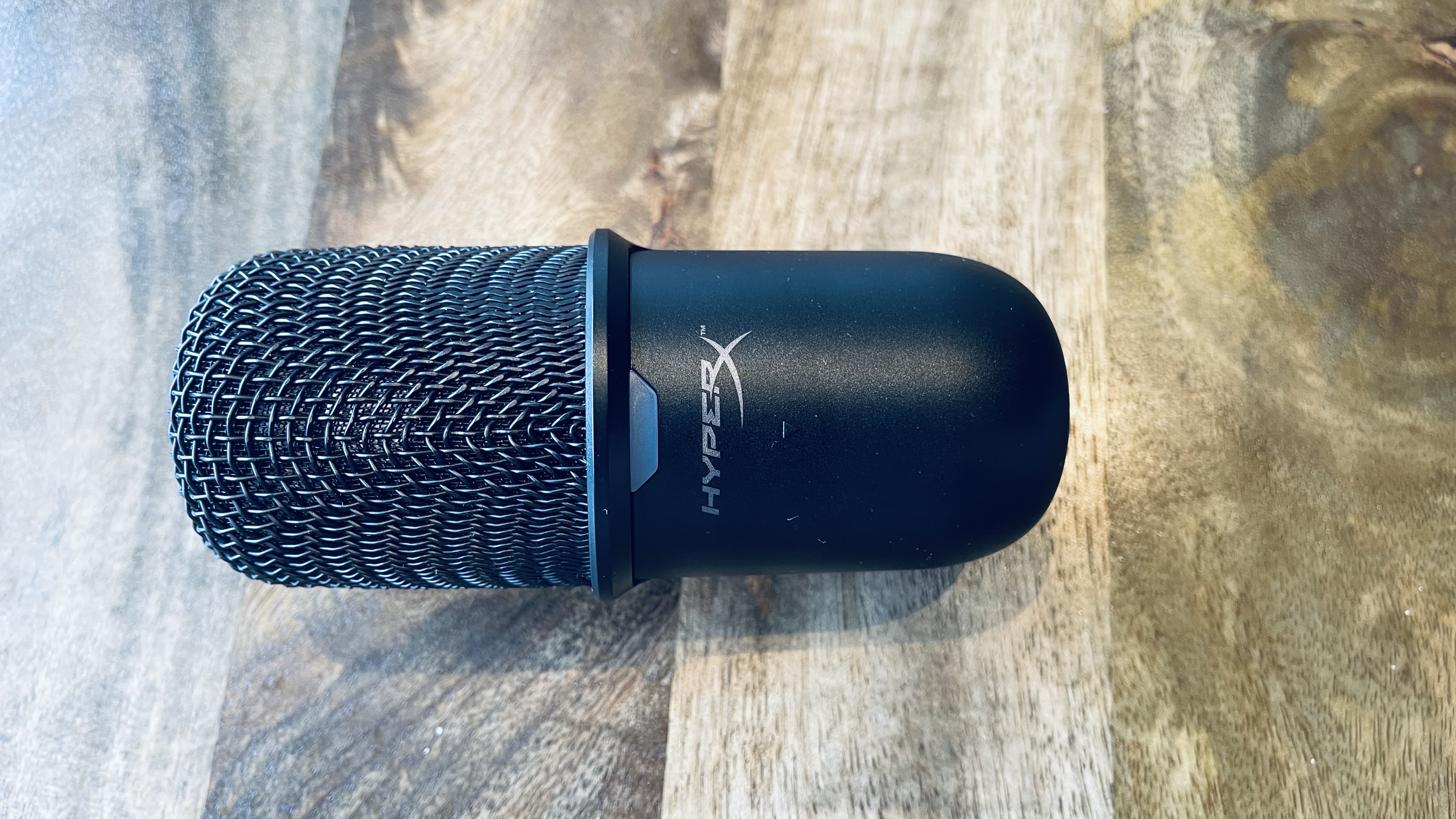
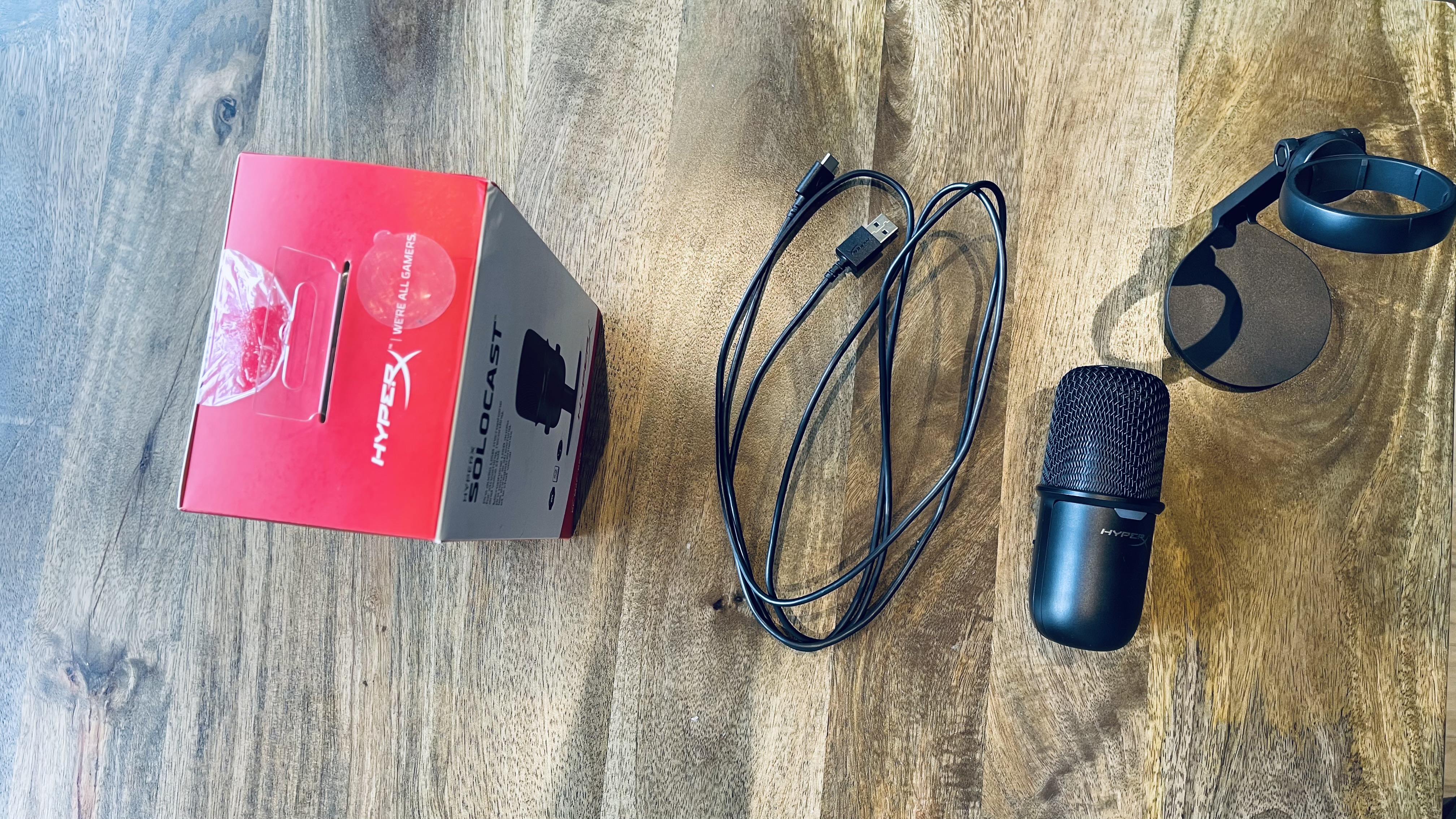

While other streamer mics could be accused of peacocking (Razer Seiren Emote, looking at you), HyperX takes a very different tack here. If you were being charitable, you’d call it a grown-up, professional look. If you were being less so, you’d say it looked a bit ‘Amazon Prime electronics department.’ Just a bit.
There’s just nothing to catch your eye and prompt you to notice the design. And this obviously isn’t a lapse on the industrial design team’s part. HyperX knows how to make products that look and feel great. This is obviously one of the trade-offs the SoloCast makes in order to hit its $60 price point.
Get Tom's Hardware's best news and in-depth reviews, straight to your inbox.
Construction materials are dominated by utilitarian matte finish black plastic, and although aesthetic touches, like the gloss finish ring around the mic mute touch pad on the top of the mic capsule are present, they can’t hold a candle to Razer’s cheaper Seiren Mini and its glorious finish.
Like all USB streamer mics though, a stand is supplied with the mic capsule itself in the box. This one’s weighty enough at the base to keep it upright if you knock it during a particularly expansive hand gesture mid-stream. And, unlike its contemporaries, the SoloCast offers a variety of angles and positions, including a vertical tilt angle that lets you point the mic upward to your mouth if you’re using it on a desk. The cradle also rotates at 45-degree angles and offers 180 degrees of rotation in total, so it’s a much more lithe model than we’d expect for the money. Unfortunately, our review sample tends to droop downwards if it’s arranged horizontally and tilted upwards, but truthfully we’d never calibrate it in that way in the first place.
Due to the small size of the stand and the absence of a shock mount, we’d say fitting it to a boom arm instead is borderline essential to get the best sound out of it. The SoloCast’s small stature is good news for anyone who wants to use it with a low-cost boom arm. You know, the ones that tend to droop back down into your face if you overload them with weight. You’ll have no such trouble with the SoloCast, and with threads for both 3/8-inch and 5/8-inch boom mounts, you’ll have no drama getting it onto a boom. The SoloCast is 3.1 x 3.1 x 7.1 inches in its stand or 3.1 x 3.1 x 5.1 inches without the stand, making it just a bit larger than the Seiren Mini (2.2 x 3.5 x 6.4 inches in its stand).
Sound Quality
Here’s the real surprise: the SoloCast sounds pretty close to its bigger HyperX QuadCast brethren, and also to the Seiren Mini, our current favorite budget mic. Once you factor in the quality loss from the broadcasting platform itself, whether that’s Discord, Twitch, YouTube or Soundcloud, it’d take a very keen pair of ears to tell the difference between the mics. Thanks to the hotly contested nature of the streamer kit market, you really don’t need to throw a lot of money at your audio setup to get a great mic sound at the moment.
There are differences though, at least at unprocessed audio level, between all three aforementioned mics. The Seiren Mini’s hypercardioid polar pattern means it’s a bit pickier about where its recording ‘sweet spot’ is, producing a thinner sound unless you’re facing it directly with your mouth a few inches away. Both HyperX models are a bit more forgiving in this regard, but the tradeoff here is in added room noise an -- that pariah of gaming broadcast -- mechanical keyboard clatter. When using the SoloCast on its supplied stand, the latter seems to carry through the desk and pick up on the mic more clearly than the shock-mounted QuadCast or hypercardioid Seiren Mini.
With that said, the SoloCast does offer a warmer sound that these naturally subjective ears find preferable to the $50 Seiren Mini. Does the SoloCast sound $10 better? If you want a vocal sound that comes out more neutral and with less harshness to sibilant sounds, yes.
For its part, the bigger and more expensive ($140 as of writing) QuadCast definitely offers more warmth and a fuller sound than the SoloCast while also delivering a more natural sounding low-end. This may be due to the increased capsule size and diaphragm the QuadCast has over our review focus.
Features and Software
As you might expect for an entry-level mic, there isn’t a lot to tweak here at a hardware or software level.
Where the SoloCast has a definite advantage over the Seiren Mini is the addition of a physical mute button, at the top of the mic capsule itself. Instead of a click-down switch it’s a touch-operated pad which produces much less perceptible noise when you operate it, so hats off to the design team on that one. A single indicator light will emit constantly when unmuted, or intermittently when muted. That’s another point scored against its contemporaries, since it’s not de rigueur to include such an easy method of keeping track. Other than the aforementioned two threads for different sized mic mounts and the adjustable stand, that’s all she wrote on the hardware features front.
And mercifully, the SoloCast doesn’t need any software to function correctly. Anyone whose headset, keyboard and mouse are all made by different manufacturers each with their own profiling software will know just how much of an imposition it seems to install yet another program just to tweak some mic settings. And with the honorable exceptions of Blue and Elgato, which offer some really tight presets for broadcasting and recording in their software, these apps don’t tend to add much value. In the case of the SoloCast, you can tweak away to your heart’s content by running the mic into a DAW and applying plugins to the track.
Bottom Line
It wasn’t long ago we were swallowing Razer’s little pink pill and proclaiming its Seiren Mini the best entry-level pick for streamer mics, but with the arrival of the SoloCast we’re not so sure. HyperX’s increased features (most importantly a mute button) and warm tone more than justify spending an extra $10.
Which means if you want to be really specific about how much you spend on a streamer setup, there are now really strong picks at either price point; you don’t lose out whether you choose to spend $50 or $60.
That’s where the “cult of Razer” marketing kicks in. The Seiren Mini just looks and feels a little more refined, and distinctive -- quintessentially Razer. Contrastingly, the SoloCast looks utilitarian, and you’d have a tough time guessing which manufacturer made it if it wasn’t for that brand logo on the front. These are small details, but the look of your setup matters if you’re streaming or recording on camera, so they’re not inconsequential ones. Decide which one makes your eyes happier, and make your pick accordingly.
